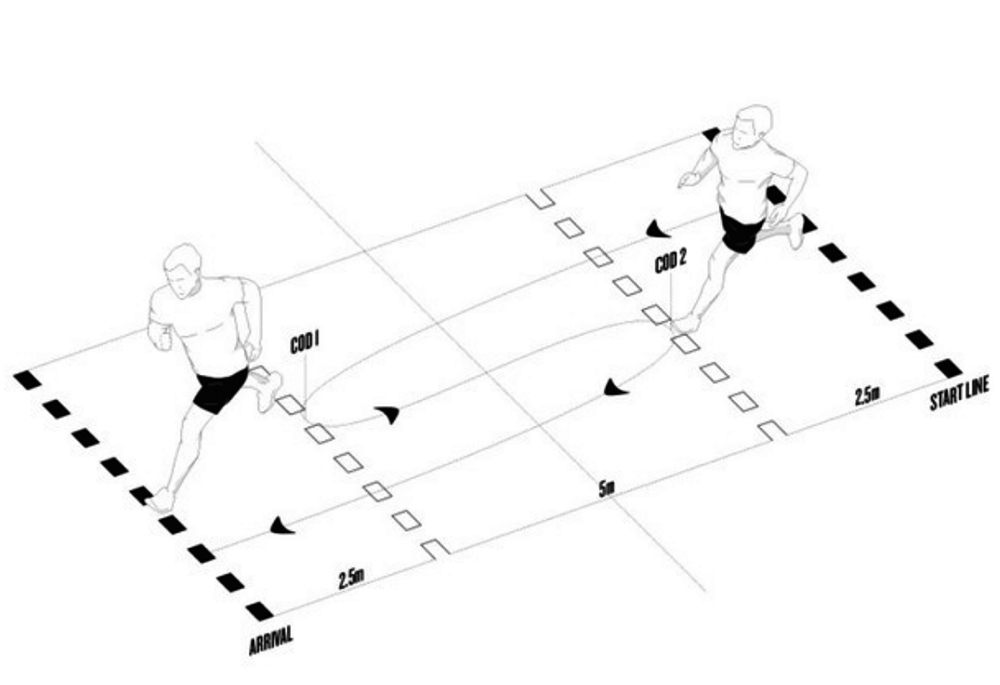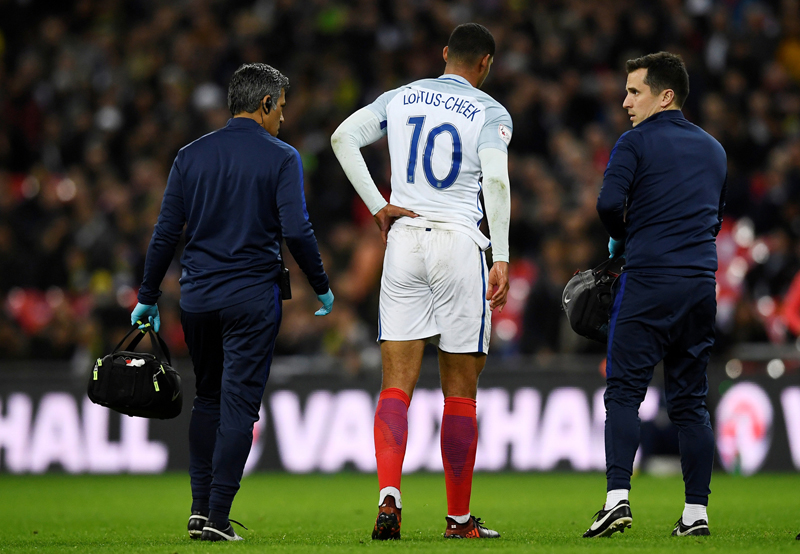Soccer performance: why symmetry matters

New research on soccer players suggests that limb asymmetry can be surprisingly large, quite variable and negatively impacts performance
No human body is perfectly symmetrical, and each and every person on the planet has slight left/right discrepancies in limb lengths, joint mobility and muscle/tendon architecture. This fact alone means that we cannot expect exact left/right symmetry in terms of limb strength, flexibility and movement patterns, and this is indeed the case. However, these asymmetries are accentuated greatly in sports where athletes are exposed to high volumes of training and competition, and where there is a preferred limb dominance – eg right/left handed, right/left-foot kicking in tennis and soccer respectively. In these types of sports, skill training sessions require athletes to frequently repeat the execution of unilateral and asymmetric movements, further exacerbating ‘between-limb’ differences in strength, power, and joint range of motion.The downsides of asymmetry
Previous research has established that asymmetry in athletes is a potential risk factor for injury, most likely as a result of additional loading placed on the soft tissue structures of the non-dominant limb(1). There’s also evidence that limb asymmetry may negatively impact certain aspects of performance in some sports where you might imagine asymmetry would not feature as an issue - see this article on the impact of asymmetry in cyclists(2,3). For athletes where limb dominance is part and parcel of the sport (eg soccer players), previous research has demonstrated that left/right asymmetries are common and when these asymmetries are sufficiently large, they can impact certain aspects of performance such as jumping ability(4).Measuring asymmetry
In the past three years or so, a number of studies have investigated the magnitude and direction of inter-limb asymmetry in neuromuscular capacities (ie change of direction ability, [COD], jumping performance and balance tasks)(5-7). In these studies, the magnitude of asymmetry has been shown to be highly task-dependent with large variations reported between tasks. What has confounded researchers however is that the strength asymmetries observed don’t necessarily correlate well with the performance asymmetries observed.One explanation is that this is because strength asymmetries have almost always been measured in these studies using ‘isokinetic resistance dynamometry’ – a device that records the maximum force exerted through a specific range of motion while the limb moves at a predetermined speed (set by the machine). Despite the high test-to-test reproducibility when using isokinetic dynamometry, some researchers believe that the evaluation of inter-limb asymmetries using ‘iso-inertial’ devices is preferable(8). The reason is that good performance measured on iso-inertial devices much better reflect the sport-specific demands in activities like soccer where rapid changes of momentum (eg acceleration/deceleration and change of direction) are critical for performance.
New research
To try and provide further clarity on the magnitude, direction (ie whether affecting the left or right side) and impact of asymmetries on key aspects of performance, a team of Spanish researchers has just published new research in the Journal of Human Kinetics(9). In this study, the researchers analyzed the magnitude and direction of inter-limb asymmetries in ankle dorsiflexion (where the foot is flexed so the toes move closer to the shin –see figure 1), range of motion, power development (measured using iso-inertial devices), and neuromuscular skill (using change of direction tests - COD). In addition, the scientists aimed to determine the relationship between inter-limb asymmetry scores for each test and also between these scores and the scores for the different performance tests.Figure 1: Ankle dorsiflexion (and plantar flexion)

In ankle dorsiflexion, the toes move closer to the shin, whereas in plantar flexion, the toes move away from the shin.
Sixteen semi-professional male soccer players participated in the study. Ten players had right kicking lower-limb dominance, while six had left lower-limb dominance. Players were currently in-season (competition) and trained on average eight hours per week, consisting of six hours of soccer and two hours of resistance training. Once the players had had the opportunity to become familiar with the testing procedures, all the participants were assessed for the following:
- Ankle dorsiflexion range of motion.
- Flywheel leg extension and leg curl performance, measured using iso-inertial resistance from an ‘Eccophysic Training Force machine’. The first 2 repetitions were performed sub-maximally to generate momentum, whereas the 6 following repetitions were performed maximally. Participants executed 3 sets for each and the best score for each extension and curl was selected for analysis, in both the concentric and eccentric muscular actions.
- Cross-over step test – an agility test and ‘balance on the move’ test where each step involves the left foot crossing over the right foot and vice-versa during a run with side-to-side motion (see for a demonstration).
- Change of direction (COD) speed – the COD180º tests consisted of two 180° changes of direction using the same leg (right or left, respectively) in each trial. The first change of direction was performed after 7.5 metres from the start, and the second one was performed after 5 metres from the first change of direction. Participants sprinted a total distance of 20 m (see figure 2).
Figure 2: Change of direction (COD) speed test protocol

The findings
The key findings were as follows:- All the players showed differing degrees of asymmetry, and the magnitude of the asymmetry varied depending on the test being performed.
- The highest inter-limb asymmetry (ie largest differences between left and right sides) was observed during the iso-inertial tests (leg extensions and leg curls).
- Surprisingly, the direction of asymmetry (ie favoring left or right side) varied with the test performed.
- The change of direction speed asymmetry (ie faster times when leading with one limb or the other) was strongly negatively associated with leg extension performance – ie a high degree of symmetry in leg extension performance resulted in better overall change of direction performance.
- Higher degrees of cross-over step asymmetry and poorer performance in this test strongly predicted poorer performance in the change of direction tests.
Implications for soccer players and other athletes
The first thing to note is that the direction and size of the limb asymmetry measured in this study varied according to the test used. The clear implication therefore is that relying on just one type of testing protocol to detect the presence and magnitude of asymmetry in an athlete is not recommended. Instead, a variety of tests are recommended. Secondly, strength testing using iso-inertial resistance seemed to be a good method of detecting functional asymmetries in the players. This finding is in line with previous research, which found iso-inertial testing may be more sensitive than other means of strength testing(10). For that reason, and because the type of force generation required more closely reflects the demands of team sports like soccer (lots of powerful accelerations, decelerations and changes of direction), iso-inertial strength testing may be preferable to conventional or isokinetic strength testing when screening soccer and other team players. Finally, the cross-over step test seemed to be very useful for detecting asymmetries that could be related with performance of soccer-specific actions (such as changes of direction). This particular factor could be explained by the coordinative and neuromuscular complexity of performing the cross-over stepping action, along with the muscles involved, which suggests this test could be potentially very useful to detect asymmetries in the last stages of the return to play process following injury.References
- Strength Cond J. 2012;34(1):82–86
- J Sports Sci. 2018;36(10):1135–1144
- Sports (Basel). 2019;7(3):58
- J Athl Train. 2020 Dec 2. doi: 10.4085/1062-6050-0013.20
- J Strength Cond Res. 2019 Sep; 33(9):2579-2593
- J Hum Kinet. 2020 Jan; 71():47-58
- J Sports Sci. 2020 Jun; 38(11-12):1296-1303
- J Strength Cond Res. 2019 Sep 26; ():
- J Hum Kinet. 2021 Jul; 79: 41–53
- Sports Biomech. 2019 Oct; 18(5):515-526
You need to be logged in to continue reading.
Please register for limited access or take a 30-day risk-free trial of Sports Performance Bulletin to experience the full benefits of a subscription. TAKE A RISK-FREE TRIAL
TAKE A RISK-FREE TRIAL
Newsletter Sign Up
Testimonials
Dr. Alexandra Fandetti-Robin, Back & Body Chiropractic
Elspeth Cowell MSCh DpodM SRCh HCPC reg
William Hunter, Nuffield Health
Newsletter Sign Up
Coaches Testimonials
Dr. Alexandra Fandetti-Robin, Back & Body Chiropractic
Elspeth Cowell MSCh DpodM SRCh HCPC reg
William Hunter, Nuffield Health
Keep up with latest sports science research and apply it to maximize performance
Today you have the chance to join a group of athletes, and sports coaches/trainers who all have something special in common...
They use the latest research to improve performance for themselves and their clients - both athletes and sports teams - with help from global specialists in the fields of sports science, sports medicine and sports psychology.
They do this by reading Sports Performance Bulletin, an easy-to-digest but serious-minded journal dedicated to high performance sports. SPB offers a wealth of information and insight into the latest research, in an easily-accessible and understood format, along with a wealth of practical recommendations.
*includes 3 coaching manuals
Get Inspired
All the latest techniques and approaches
Sports Performance Bulletin helps dedicated endurance athletes improve their performance. Sense-checking the latest sports science research, and sourcing evidence and case studies to support findings, Sports Performance Bulletin turns proven insights into easily digestible practical advice. Supporting athletes, coaches and professionals who wish to ensure their guidance and programmes are kept right up to date and based on credible science.









